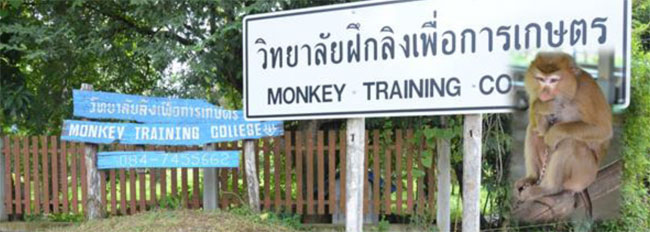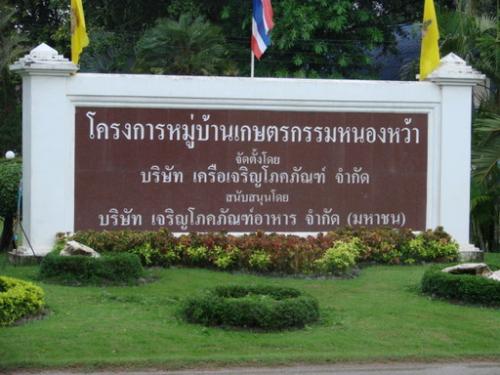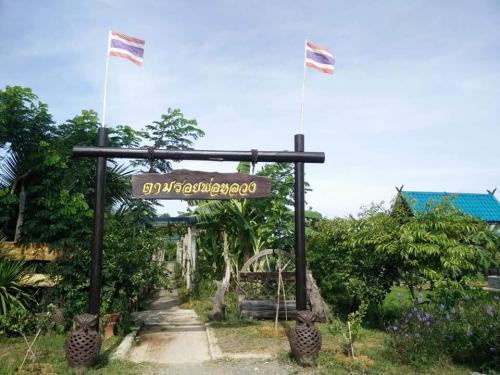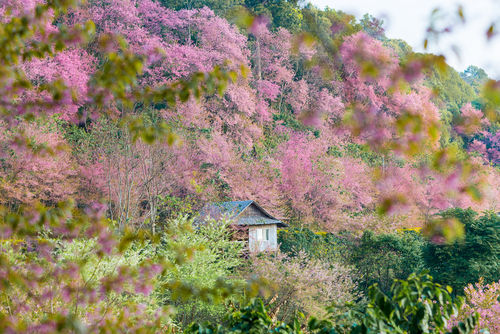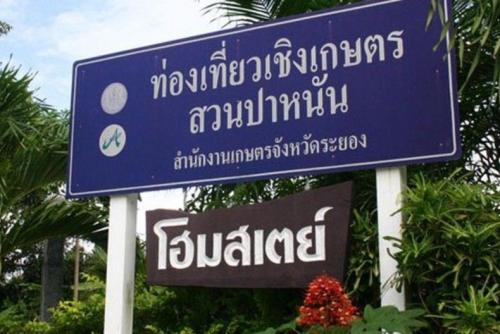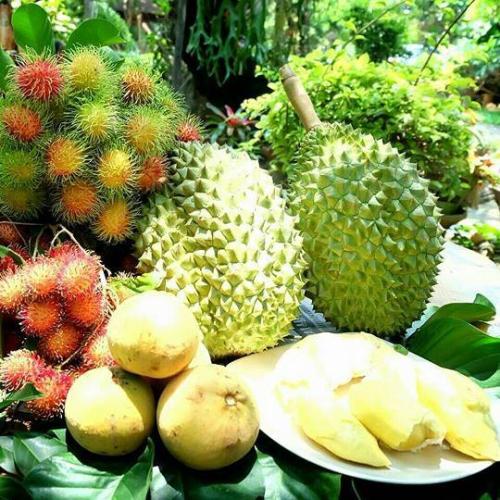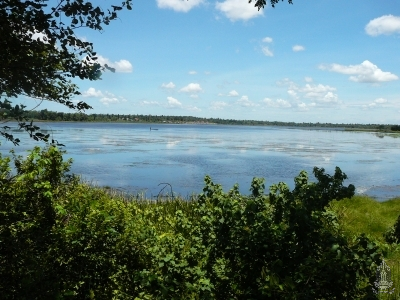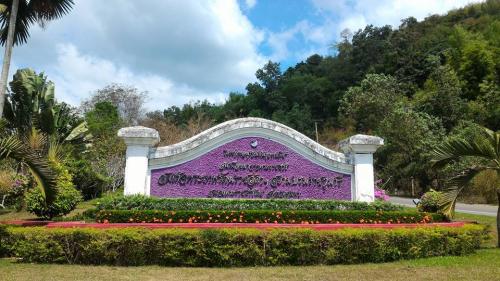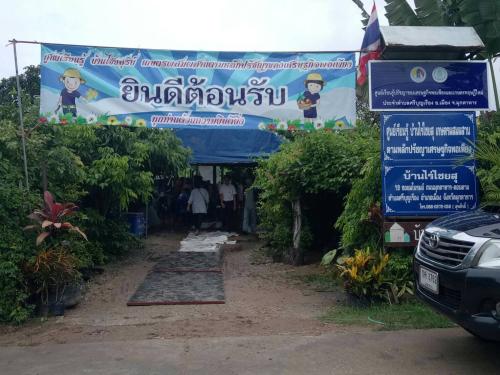Weather
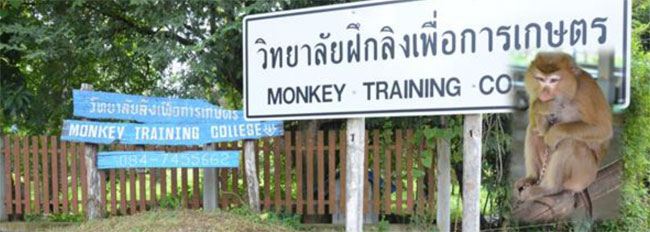
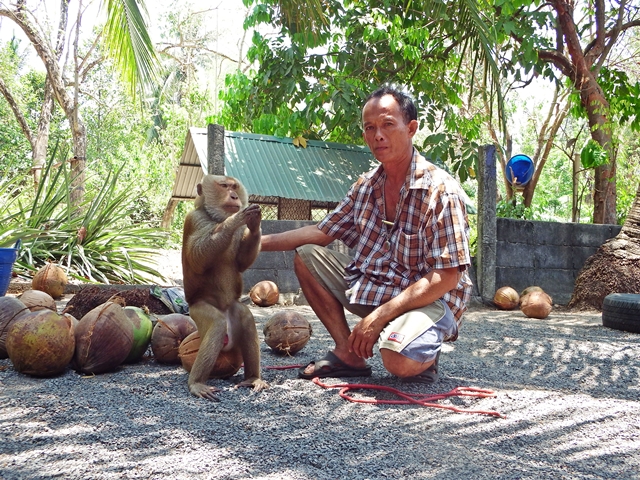
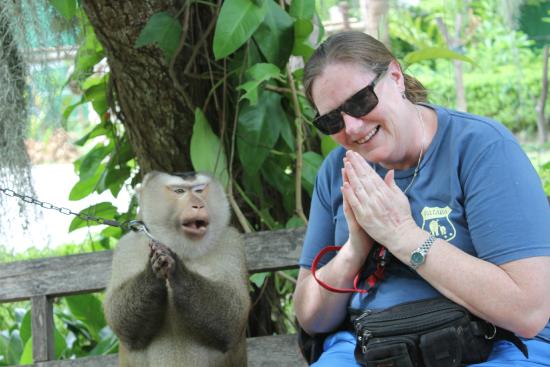
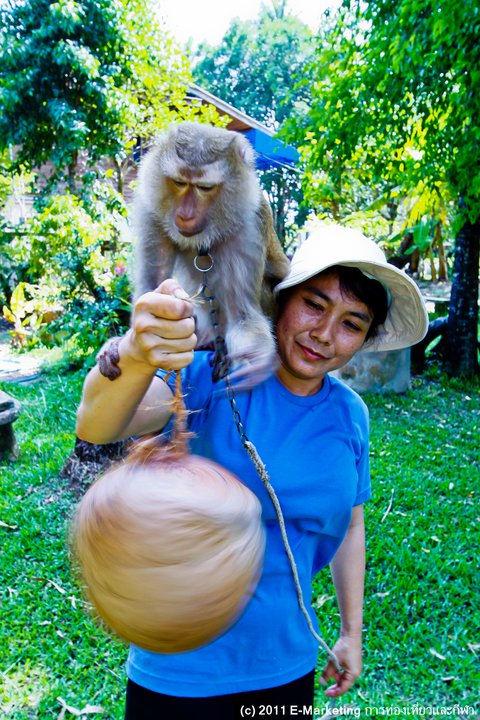
Open
Business hours
• Sunday
: 09:00 - 16:00
• Monday
: 09:00 - 16:00
• Tuesday
: 09:00 - 16:00
• Wednesday
: 09:00 - 16:00
• Thursday
: 09:00 - 16:00
• Friday
: 09:00 - 16:00
• Saturday
: 09:00 - 16:00
Note
: -
Map
Review Score
0
Information
Monkeys, according to teacher Somjai, are like naughty children. Teacher You must teach it in stages, beginning with the easiest and progressing to the most difficult. The courses are structured as follows: first month using hands, second month using feet, third month standing posture and jumping posture, fourth month climbing, fifth month climbing, sixth month working, and so on. Teachers must teach monkeys face to face till they are trustworthy and it is important to use eyes and hearts.
Source
Thailand Tourism Directory
Recommended
Entrance fees
• Entrance fees: Non-fee
• Remark : -
Review (0)
Write Review
0
จาก 5.0
Availability
Value
Service
Relate Agritourism
From over 1.6 square kilometer of useless wasteland to a strong farmer community today, “Nong Wa Agricultural Village”, Phanom Sarakham District, Chachoengsao Province uses the “3 Benefit 4 Collaboration” model to enable farmers to access land and funding sources. They revived the dry land to become a green agricultural area, and farmers have a stable career.
Chachoengsao
The learning center following the footsteps of the Luang Pho Luang is located in Moo 3, Sappaya Sub-district (Huai Krot-Sappaya Road), the Sufficiency Economy Learning Center.
Chai Nat
high altitude research and training station used as a plot to study and experiment on plants It is a place for internships for students both inside and outside the institute and as a place to study nature. to people who are interested in general
Chiang Mai
Panan garden has many types of fruit planted there, including rambutan, mangosteen, longkong, durian. The cost of visiting Panan garden during May - June, when the orchard is full of fruit is 200 baht per person (price subject to change). In addition, there is also accommodation in the orchard.
Rayong
Various kinds of fruit orchards, cool and charming atmosphere, along with accommodation and food
Kamphaeng Phet
Kud Kaloeb is a large natural water source with clear water to see the fish; it is located in Tambon Nong Ped and Tambon Nong Hin. Originally, it was just a water source that people used for farming and only catch fish for a living. But, now, Yasothon has developed it into a tourist attraction and recreation venue by adjusting the landscape to be beautiful. It is where the Songkran Festival of the province is held every year. There are people who always come to visit and relax on holidays.
The convenient travelling to Kud Kaloeb is, starting from Yasothon - Amnat Charoen Road at km 14 (Ban Khamkerd, notice that there will be watermelons for sale along the road), turn left into Ban Nong Ngong, go to Ban Nong Bok - Ban Non Sawat, you will reach Kut Kalieb. The distance is about 10 kilometers.
Yasothon
King Bhumibol Adulyadej (King Rama IX) foresaw the significance of plant genetic conservation prior to a recognition of the terms “Biological Diversity” and “Conservation” in Thailand. During the trip to Klai Kang Won Palace, A. Hua Hin, Prachuap Khiri Khan Province in 1960, he passed through A. Tha Yang, Phetchaburi Province and noticed many Yang Na trees (Dipterocarpus alatus). Therefore, he had royal words to collect the seeds to plant at Phra Tamnak Piam Suk, Klai Kang Won Palace, and grow the seedlings at Royal Chitralada Projects to study. In 1985, King Rama IX gave a royal word to conserve jackfruit tress around the Grand Palace and initiated the plant conservation project in the palaces by tissue culture. Later in 1986, he had the royal idea to conserve and breed rattan palms and arrange the herbal garden in Royal Chitralada Projects area.
Her Royal Highness Princess Maha Chari Sirindhorn carried on the plant conservation project by having the royal idea and asked Lord Chamberlain to carry out plant conservation project in June 1992, when the seed gene bank was formed, and study the preservation of non-industrial crops under the royal thought framework.
In 1993, Mr. Sujin Phunikom, the Assistant Subdistrict Headman of Salui and Tha Sae District, Chumporn Province, and his group, cooperated with the Director of Ultra Products Co., Ltd. and the agriculturists in Chumporn Province to establish plant conservation project at the public area located at Moo.6, Salui District (presently Moo. 5 and 6, Salui District, and Moo.4 and 7, Song Phi Nong District). At the same time, the Royal Chitralada Projects was looking for the area to set up the Plant Genetic Conservation Project Under The Royal Initiative of Her Royal Highness Princess Maha Chari Sirindhorn.
Subsequently, Royal Chitralada Projects represented by Professor Prachid Wamanont (the Consultant) and the team met with Chumporn Governor (Mr. Prayoon Promphan) to discuss about the project. The first five years, the project was named “Plant Conservation and Development Project Under The Royal Initiative of Her Royal Highness Princess Maha Chari Sirindhorn, Chumporn Province”. Chumporn Provincial Agricultural Extension proposed the project for the approval from Chumporn Governor and submit the project documents to the Director of Royal Chitralada Projects to respectfully inform to Her Royal Highness Princess Maha Chari Sirindhorn on 26 April 1993. Moreover, Plant Conservation and Development Project was integrated with the royal plant genetic conservation project, which Dr. Pisit Wora-urai was a Chairman. The executives meeting on 9 July 1997 had the resolution to change the project’s name from “Plant Conservation and Development Project Under The Royal Initiative of Her Royal Highness Princess Maha Chari Sirindhorn, Chumporn Province” to “Plant Genetic Conservation Project Under The Royal Initiative of Her Royal Highness Princess Maha Chari Sirindhorn”
Chumphon
Ban Rai Chaisuri is at Si Bun Rueang Subdistrict, Mueang, Mukdahan. It is a learning center for a career according to the sufficiency economy. This place is available for the general public and tourists to learn about various agriculture to apply for a career.
Mukdahan
The perfect combination between a Historic River and Agro-Tourism, ""Cruising along the Maha Sawat canal and the beautiful orchard sceneries."" Changing the natural capital to be a perfect agricultural tourism.
The agro tourism ""Cruising along the Maha Sawat canal and the beautiful sceneries"" was initiated from the concept of bringing the way of life of farmers who are doing routine of working together with the existing ""natural capital"", the resources of agriculture, gardening, farming, plowing, which parents, grandparents, and grandparents carry on until this generation. To adapt with what is available in the area, Khlong Khut Maha Sawat, historic canal that King Mongkut (Rama IV) graciously digs for a route for His Majesty to worship Phra Pathom Chedi. It took 5 years to complete the excavation, from 1855 to 1860. Khlong Khut Maha Sawat is 27 kilometers long from Bangkok to Tha Chin River and has many stories about the canal, such as the King's request to build 7 pavilions along the canal, for example the City Hall (Sala Klang Subdistrict Nonthaburi Province), Sala Thammasop (Taweewattana District, Bangkok), Salaya and Sala Din, which are in Phutthamonthon District. In addition, there are people using the last name beginning and ending with the word ""Sawat"" about 68 surnames such as Sawat Daeng, Sawatjun, Sawatsoradet, Sawatnam, Sawatdee Me, Desawad, etc.
tourism program
One Day Trip
Point 1 going to the pier at Suwannaram Temple with welcome farmers to lead tourists to various spots
Point 2 Watching the Gac Processing and the story before it came to be Yentafo Fak Rice and healthy gac juice
Point 3 Visiting Na Bua Luang Cut Dok to learn how to make lotus Rowing a boat to collect lotus in the middle of the swamp Learn to fold lotus petals.
Point 4 Visiting the miracle of Thai rice.
Point 5 Orchid Garden Visit an orchid garden and cultivate various orchid species.
Point 6 Visiting the fruit orchards, mixed farming fields, and tasting seasonal fruits. Taking an E-Tak car ride to see the garden and plots of rice fields
Route links with other attractions (with distance/km)
Jesada Technik Museum Nakhon Chai Si District, 21 kilometers distance
- Thana Market, Nakhon Chai Si District, 25 kilometers distance
- Don Wai Floating Market, Sampran District, 10 kilometers distance
- Wat Rai Khing, Sampran District, 15 kilometers distance
- Lam Phaya Floating Market, Bang Len District, 26 kilometers distance
- Phutthamonthon Sathan, Phutthamonthon District, 6 kilometers distance
- Phra Pathom Chedi Mueang Nakhon Pathom District, 36 kilometers distance
Community enterprise products in the community
assorted rice bowls
- Crispy Golden Banana
- Miang Kham Bua Luang
- Seasonal products such as grapefruit, mango, jackfruit, banana
- Ornamental plants, lotuses and orchids
Nakhon Pathom
Suan Sawan Suphan Buri on the area of hundreds of acres: It consists of many types of plants that are displayed for viewing each period and various festivals throughout the year, including Thai flowers and oversea flowers that are colorful, beautiful and spectacular. Both foliage and fruit trees that have been researched and propagated until obtaining suitable varieties with the best quality for distribution to farmers for further cultivation
Suphan Buri
Baan Bua Thoeng Community, the learning center for sufficient living, mixed farming, organic agriculture, bio-composting resources, the benefits and use of bio-compost to agriculture, and the use of local wisdom in agricultural development to suit hot and dry climate of Northeast.
Ubon Ratchathani
- Watch the fish and mussels raising in cages,
- Cultivation of seagrass
- Study mangrove ecosystem
- Processing of salted fish with nets/sea food
- Toei Panan Weaving
tourism program
- Arrive at the group office. Listen to a briefing on the history of Ban Pru Jude Cage Fish Farming Community Enterprise
- Learn how to raise aquatic animals in cages
- Take a boat trip to see the mangrove ecosystem. Study mangrove forests, hot springs, visit Boonkong Bay, plant seagrass to conserve food for dugongs in the Trang sea, visit various islands, beaches, return to the accommodation, have dinner, see the community's way of life in the morning. Seafood Processing Group, Kang Mung Salted Fish, Toei Panan Basketry Group, buy souvenirs, Travelling back
Route links with other attractions (with distance/km)
- Pak Meng Beach 8 km.
- Hua Hin Beach 3 km.
- Rajamangala Beach 6 km.
Note: The distance measurement is taken from the point of the group office as a starting point
Community enterprise products in the community
Agricultural products, seafood, salted fish with nets Toei Panan wicker products
Trang

